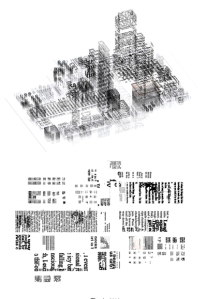As I get more and more into Graphic Novels, it seems there is a great opportunity to read them from an urban cultural studies perspective. For example, I have been working with a colleague on an Argentine graphic novel called the Ethernaut (here’s a full page Eternauta FULL PAGE ej) where aliens invade the city of Buenos Aires–various landmarks in the center of the city are a prominent part of the war that ensues (our piece should be published soon in Revista Iberoamericana and references work by Fredric Jameson on science fiction as a ‘spatial genre’–see earlier post).
It seems the same topic of city representation might be relevant to discussion of the series by Jason Lutes (City of Stones, City of Smoke) that takes place in Berlin (also above in image gallery).
Looking forward to hearing if others are interested in graphic novels from an urban perspective…!

